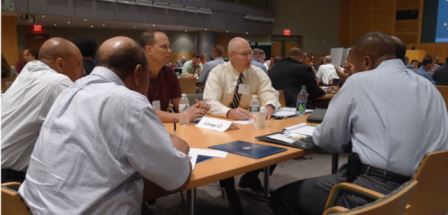
You have real opportunities to improve your organization’s readiness to manage a crisis. Developing emergency preparedness plans is critical, but a challenge arises when the planning efforts end with the plan creation. While it is better to have a plan than to be completely unprepared, a constant state of readiness is only possible if the plan is challenged and practiced.
Tabletop drills are an excellent way to practice, evaluate – and ultimately, improve – an emergency preparedness plan. Tabletop drills simulate an emergency situation where participants review and discuss the actions they would take during that type of emergency. These exercises test your emergency plan in an informal, low-stress environment.
Tabletop exercises can be done simply and with very little expense. Once you have identified a plan that you want to test, such as response to an active shooter, then you craft a scenario, assemble a group of participants, and identify a person to facilitate the discussion. Learning objectives and goals should be established during the planning process, and you will want to make sure that learnings are recorded, and the team produces actionable results.
While your objectives will be unique to each exercise, possible learning goals might include:
-
Does your plan involve the right people?
-
Does your plan have an effective process for notifying our stakeholders?
-
Do your stakeholders know what to do?
-
Does your plan allow for failure to connect with one or more stakeholders? (What if they are on a plane?)
-
Does your plan account for the resources that are actually in place?
-
Does your plan achieve the desired outcome?
Tabletop drills can help you establish a baseline for where your emergency preparedness plan is today and where is needs to be to help ensure proper response and recovery when the worst case scenario occurs.
About the Author
Paul Caruso is the Vice President of Sales – New England for Allied Universal.









